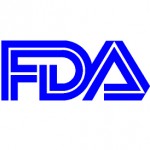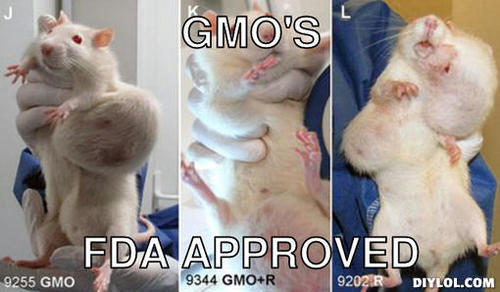Much of the recent debate (in the media and at the FDA) about fluoroquinolone safety has focused on whether or not people are being adequately warned about the dangers of fluoroquinolones. This argument has always bothered me because it assumes that if people are adequately warned of the risks of fluoroquinolones (or other drugs), the adverse effects that they suffer from are somehow okay.
I don’t think that it’s possible for warning labels on fluoroquinolone antibiotics to be “adequate,” and I think that chasing adequacy on the warning label is the wrong goal.
How could a drug warning label adequately warn someone of the possibility of their life being ruined? How could someone possibly be properly warned that every aspect of their health could be stolen from them? How could it be described on a warning label that you may live in pain for the rest of your life, you may lose your mental health, you may never be able to do the physical activities that you used to love and that every aspect of life that you’ve established (your relationships, your career, etc.) can be taken away from you by an adverse reaction to a drug? (Some of the stories of pain caused by fluoroquinolones can be found on the FQ Wall of Pain.)
Just think about the adverse effect of chronic insomnia. If you can’t sleep: you can’t think—and it’s difficult to hold down a job when you can’t think, relationships are difficult if your mind is sleep deprived and you can’t take care of your children or spouse, hormones are thrown out of whack by lack of sleep and your ability to exercise and regulate your appetite is negatively affected—both of which adversely impact over-all health, your ability to handle stress is diminished and autonomic nervous system dysfunction can result from dysregulation of your sympathetic and parasympathetic nervous systems, and more. (And if you’re prescribed Ambien for your sleep difficulties, you’re 3-5 times more likely to DIE than those who don’t take sleep aids SOURCE). From just that one symptom of fluoroquinolone toxicity, a life can be seriously disrupted—and there is not a single victim of fluoroquinolone toxicity who only has just one symptom—most have dozens. The effects of any one of the symptoms of musculo-skeletal or nervous system destruction can be ruinous to a person’s life.
The warning labels on fluoroquinolones are not adequate, and they won’t be adequate until they say something pretty close to, “These drugs can ruin your life.”
Pharmaceutical Adverse Effects
Yes, all drugs have side-effects. We’ve all heard it a million times. Pharmaceuticals are inherently dangerous. We all know that. But other things that are inherently dangerous aren’t given a blank check for causing harm like pharmaceuticals are. For example, cars are inherently dangerous. You can die in a car wreck. You can die from a car hitting you. They are dangerous and we all know it. But if someone murders you with a car, you can still hold the driver responsible. If someone drives under the influence of alcohol or drugs, they can be held responsible for the damage they caused. If a car has a defect and harm is caused to a person because of that defect, the car manufacturer can be held responsible for the harm caused.
On the other hand, it is difficult–often impossible–to hold drug manufacturers responsible for the harm that their products cause. If an adverse effect is listed on a warning label, you cannot sue because “you were warned.” If an adverse effect isn’t listed on a warning label, you cannot sue because you can’t prove that the drug hurt you. And if you get the rare opportunity to sue when drug labels change, you’ll be out of luck if you took a generic drug, as the Supreme Court made several decisions that made holding generic drug manufacturers responsible impossible.
Drug Manufacturer Responsibility
People who have been maimed by prescription drugs should not be fighting for adequate warnings on drug labels (though it is a step in the right direction and I don’t object to any proposed fluoroquinolone warning label changes). We should be fighting for justice and being able to hold the pharmaceutical companies and doctors who hurt us responsible for the harm that they have done.
In “A Public Policy Plan to utilize the Pharmaceutical Industry and Pharmacogenomics to reduce serious Adverse Drug Reactions, develop Personalized and Individualized Therapy, and provide a Functional Map of the Human Genome” (which is highly recommended – click the link and read the essay – it’s well worth your time) by JMR on http://fluoroquinolonethyroid.com/, it is noted that:
“Currently, their (the pharmaceutical companies) responsibility in this issue appears to end with the “appropriate warnings” provided in size 5 font on the drug inserts or via fast-talking monologues over the “happy commercials” on TV as they market directly to the consumer. And it’s usually only until enough people are maimed or killed that legal action or the FDA will actually make a difference in their behavior. There is a “buyer beware” mentality under the guise of “informed consent” – which is essentially “blaming the victim” for their own adverse reaction – but as far as the drug companies are concerned, they’ve “done their part”. The reality is, if the pharmaceutical companies and the FDA were truly concerned about the “health and safety” of the population they market to, they would put their money where their mouth is and take some of their billions in profits to study and research 1) who and why some people have these adverse reactions, 2)how to prevent these adverse reactions from happening, and 3) how to effectively treat them so as to return health and functionality to those who have been severely hit. Ultimately, this will help patient consumers by better identifying risk factors for individuals, and preventing these adverse reactions from occurring as well as provide appropriate treatments when they do occur.”
Pharmaceutical company profits are astronomical. Yet they contribute NOTHING to solving the significant problem of adverse drug reactions. They do NOTHING to take responsibility for the role that they play in devastating lives with their chemical concoctions. A very good solution to this problem is proposed in “A Public Policy Plan to utilize the Pharmaceutical Industry and Pharmacogenomics to reduce serious Adverse Drug Reactions, develop Personalized and Individualized Therapy, and provide a Functional Map of the Human Genome,” and I hope that the plan that JMR outlines is, someday, enacted.
Lack of Justice for Victims
Every once in a while the media gets a hold of a story of someone being monetarily-compensated for an injury caused by a drug or vaccine. These stories give the impression that it is possible for people to gain compensation from drug companies for injuries incurred. This is not the experience of any of the victims of fluoroquinolones. Most fluoroquinolone victims have run into a dead-end when pursuing justice and recourse against the pharmaceutical companies that hurt them. (And is there any amount of money that can really compensate for chronic pain, or injury to all of the tendons in your body, or loss of your life as a person who could think, move and work?)
Currently, the only thing that victims of fluoroquinolones can sue for is “failure to warn.” It’s the only thing lawyers are taking cases for. Victims can’t sue for catastrophic, life-altering, debilitating adverse effects that are listed on the warning label. Some of the things listed on the Cipro/ciprofloxacin warning label include seizures, psychotic reactions, insomnia, tendon ruptures, peripheral neuropathy, pain, and a lot more. If symptoms are listed on the warning label, the patient/victim is considered to be “warned.” Again, how is it possible to adequately warn someone of the risk that their life may be ruined by seizures, psychotic reactions, insomnia, tendon ruptures, peripheral neuropathy or debilitating pain?
If the warning labels for Cipro/ciprofloxacin, Levaquin/levofloxacin, Avelox/moxifloxacin, Floxin/ofloxacin, and all other fluoroquinolones, had a highlighted black-box warning that said the following, maybe the argument of “you were warned” would hold a little weight:
“WARNING: THERE IS A SMALL, BUT SIGNIFICANT RISK THAT THIS ANTIBIOTIC MAY CAUSE WHOLE BODY TENDON, LIGAMENT, AND CARTILAGE DAMAGE, PERIPHERAL NERVE DAMAGE, CENTRAL NERVOUS SYSTEM DAMAGE, AUTONOMIC SYSTEM DAMAGE, ENDOCRINE SYSTEM DAMAGE, CARDIAC DAMAGE, GENOME (DNA) DAMAGE, AND MITOCHONDRIAL DAMAGE. These adverse effects may range from mild to severe, and may cause temporary or permanent crippling and partial or total disability. These reactions may occur immediately, or may be delayed for up to an unknown period of time after stopping the drug. It is unknown at this point in time who may be affected, and for what severity and duration. Prior exposure to these antibiotics may increase this risk in subsequent exposures. Taking this drug safely in the past does not guarantee that you will not have a reaction in the future. If this risk is acceptable to you for your current condition, then take this drug. However, if this is an unacceptable risk to you, be aware there are many alternative antibiotics available for most people with equal efficacy and less risks for your condition.” From “Responsible Use of Fluoroquinolone Antibiotics: The responsible, moral, and ethical approach (vs. the profit approach).”
Additionally, the list of items on Cipro is Poison that are not currently on the warning labels for fluoroquinolones, should be added to the warning label in order to “adequately warn” patients and physicians alike.
Objective: Real Change, Real Responsibility
The failure of the FDA to force the pharmaceutical companies to take responsibility for the harm that their drugs do is reprehensible. The failure of the legal system to give justice and recourse to victims of pharmaceuticals is also abhorrent.
Permanent, devastating harm is being done by fluoroquinolones and other pharmaceuticals. Though better information on warning labels may be helpful, the objective of those seeking systemic change shouldn’t be changes in the warning labels, it should be pharmaceutical company responsibility for harm done, and justice for victims.
Postscript: Responsible Use of Fluoroquinolones
Please click the links on “A Public Policy Plan to utilize the Pharmaceutical Industry and Pharmacogenomics to reduce serious Adverse Drug Reactions, develop Personalized and Individualized Therapy, and provide a Functional Map of the Human Genome” and “Responsible Use of Fluoroquinolone Antibiotics: The responsible, moral, and ethical approach (vs. the profit approach).” They are both insightful, informative, thoughtful proposals. Just a small sampling of the stories of victims of fluoroquinolones can be found on the FQ Wall of Pain.
Information about Fluoroquinolone Toxicity
Information about the author, and adverse reactions to fluoroquinolone antibiotics (Cipro/ciprofloxacin, Levaquin/levofloxacin, Avelox/moxifloxacin and Floxin/ofloxacin) can be found on Lisa Bloomquist’s site, www.floxiehope.com.
Participate in Research
Hormones MatterTM is conducting research on the side effects and adverse events associated with the fluoroquinolone antibiotics, Cipro, Levaquin, Avelox and others: The Fluoroquinolone Antibiotics Side Effects Study. The study is anonymous, takes 20-30 minutes to complete and is open to anyone who has used a fluoroquinolone antibiotic. Please complete the study and help us understand the scope of fluoroquinolone reactions.
Hormones MatterTM conducts other crowdsourced surveys on medication reactions. To take one of our other surveys, click here.
To sign up for our newsletter and receive weekly updates on the latest research news, click here.
What Else Can I Do To Help?
Hormones MatterTM is completely unfunded at this juncture and we rely entirely on crowdsourcing and volunteers to conduct the research and produce quality health education materials for the public. If you’d like help us improve healthcare with better data, get involved. Become an advocate, spread the word about our site, our research and our mission. Suggest a study. Share a study. Join our team. Write for us. Partner with us. Help us grow.
To support Hormones Matter and our research projects – Crowdfund Us.















 m sure in cases like this, the marketing department is full of clever titles like tomatut or peanato. Currently,
m sure in cases like this, the marketing department is full of clever titles like tomatut or peanato. Currently, 



























